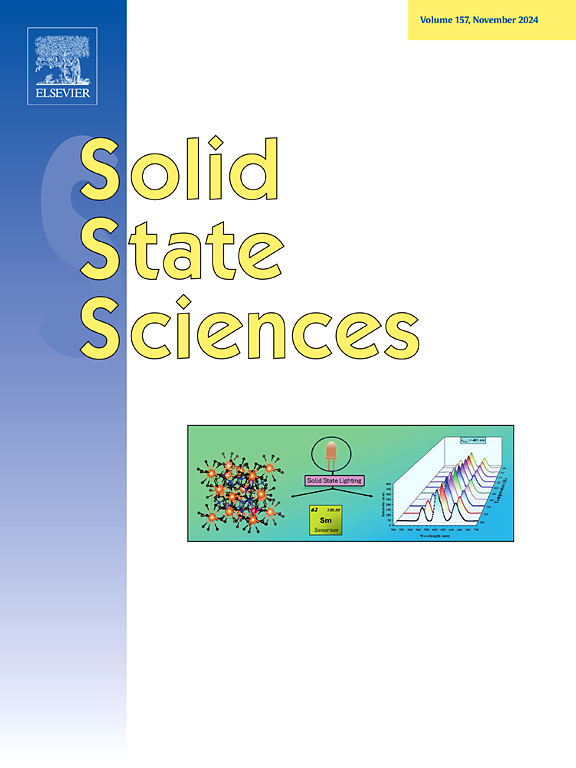Z-scheme CuO/NCN nanomaterials for rapid fluorescence detection and photocatalytic degradation of levofloxacin
IF 3.3
3区 化学
Q2 CHEMISTRY, INORGANIC & NUCLEAR
引用次数: 0
Abstract
Z-scheme CuO/NCN heterojunction nanomaterials have been successfully synthesised by loading copper oxide on g-C3N4 modified with NCDs (NCN). The material detects and photocatalytically degrades levofloxacin (LOFL) in aqueous solution by fluorescence “turn on”. CuO/NCN has good sensing performance for LOFL in the range of 0–0.275 mM[R2 = 0.9994, detection limit: 0.360 μM (0.143 ppm)]. Through comprehensive tests, it was verified that the fluorescence sensitisation mechanism can be attributed to the combination of IFE and photoinduced electron transfer. Meanwhile, Transfacial electron transport bridges (NCDs) establish double charge transfer pathways that simultaneously accelerate electron flow and Cu(II)/Cu(I) redox cycling in Z-scheme CuO/NCN heterojunctions, resulting in a synergistic photo-Fenton-like system. By constructing CuO/NCN nanomaterials, an integrated solution to treat LOFL contamination in water has been realised, equipped with detection and removal capabilities. This opens up a promising avenue to effectively, rapidly and economically address LOFL contamination in water.

z型CuO/NCN纳米材料用于左氧氟沙星的快速荧光检测和光催化降解
通过在NCDs修饰的g-C3N4 (NCN)上负载氧化铜,成功合成了z型CuO/NCN异质结纳米材料。该材料通过荧光“开启”检测并光催化降解水溶液中的左氧氟沙星(LOFL)。CuO/NCN在0-0.275 mM范围内具有良好的LOFL传感性能[R2 = 0.9994,检出限:0.360 μM (0.143 ppm)]。通过综合试验,验证了荧光敏化机制可归因于IFE和光致电子转移的结合。同时,跨面电子传递桥(NCDs)在Z-scheme CuO/NCN异质结中建立了双电荷转移途径,同时加速了电子流和Cu(II)/Cu(I)氧化还原循环,形成了协同的光- fenton -like体系。通过构建CuO/NCN纳米材料,实现了一种具有检测和去除能力的综合解决方案,用于处理水中的LOFL污染。这为有效、快速和经济地解决水中LOFL污染开辟了一条有前途的途径。
本文章由计算机程序翻译,如有差异,请以英文原文为准。
求助全文
约1分钟内获得全文
求助全文
来源期刊

Solid State Sciences
化学-无机化学与核化学
CiteScore
6.60
自引率
2.90%
发文量
214
审稿时长
27 days
期刊介绍:
Solid State Sciences is the journal for researchers from the broad solid state chemistry and physics community. It publishes key articles on all aspects of solid state synthesis, structure-property relationships, theory and functionalities, in relation with experiments.
Key topics for stand-alone papers and special issues:
-Novel ways of synthesis, inorganic functional materials, including porous and glassy materials, hybrid organic-inorganic compounds and nanomaterials
-Physical properties, emphasizing but not limited to the electrical, magnetical and optical features
-Materials related to information technology and energy and environmental sciences.
The journal publishes feature articles from experts in the field upon invitation.
Solid State Sciences - your gateway to energy-related materials.
 求助内容:
求助内容: 应助结果提醒方式:
应助结果提醒方式:


